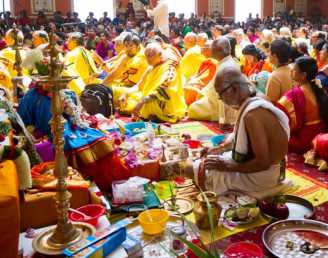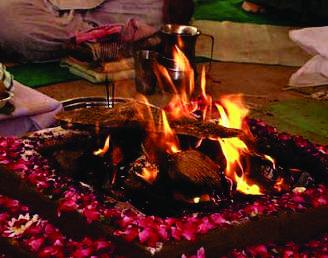Dussehra literally translates to the defeat of Ravan, i.e. ‘Dasa’ meaning ten (symbolic of the ten heads of Ravan) and ‘Hara’ meaning failure. It is also known as Vijayadashami where ‘Vijay’ means to win and ‘Dashami’ means tenth. It translates to victory attained on the tenth day. It is an occasion where the powerful Goddess Durga finally vanquished the evil Mahishasura. Additionally, it also celebrates the victory of Lord Rama over Ravana. Therefore, it is celebrated as a day where virtue conquered the vile. Falling in the month of Ashwin (September – October), during the Shukla Paksha; Dasara is celebrated not only in India but the neighbouring countries as well. Dussehra celebration in India generally involves burning effigies of the ten-headed Ravan along with that of his brother (Kumbakaran) and his son (Meghnath).
~ ~ ~ Why Is Dussehra Celebrated? ~ ~ ~
- One of the most notable legends has their base rooted in Ramayana. It follows the tale of Ramayana engaging in a battle with Ravana to rescue his wife Sita. This happened during his period of exile wherein Ram was accompanied by Sita and his brother Lakshman. One day, Ravana allured by Sita’s beauty, abducted her. The seed for the great battle of Ramayana was sown. Ram, to save his wife from Ravana’s corrupt trap, waged a war and was aided by Hanuman and Lakshman. The battle continued for 9 days where each night Lord Ram invoked different forms of Durga to gain victory. On the tenth day, Ram annihilated Ravana. Henceforth, began the celebrations of the Dasara festival.
- Another story goes something like this. The demon Mahishasura was all too powerful. He took advantage of his power and started exploiting people. He could not be defeated by the devtas as well. This is when Lord Shiva, Lord Brahma and Lord Vishnu combined their powers and gave birth to Goddess Shakti. She descended to earth and the stories of her beauty reached far and wide. Mahishasura power took control of him and he had to have her. He asked her hand in marriage, on which Durga replied saying that if he manages to defeat her, she will marry him. Thus, a battle ensued between the two and ended on the tenth day of Dussehra with Mahishasura head in her hand.
~ ~ ~ Dussehra Puja ~ ~ ~
A Dussehra Puja is generally performed by a Pandit. The following items are required for the puja – cow dung, Vermillion, Banana, Jaggery, etc.
- The image of Dussehra is drawn on the floor
- Cow manure is used to make two containers
- Water, radish, vermillion and flowers are used during the course of the puja
- Offerings of banana, radish and beans are made
- Incense and diyas are lit followed by a parikrama
- Puja commences with distributing food and Prasad.
~ ~ ~ Importance of Dussehra ~ ~ ~
The battle between Mahishasura and Goddess Durga ends on the tenth day. The start of the battle is celebrated as Navratri and the last day of victory is celebrated as the Dussehra festival. The actual significance of the day lies at the fall of vice over virtue. Where Ravana and Mahishasura are symbolic of the vices possessed by humans. The burning effigies of Ravan serve as a reminder to get rid of all our vices namely ego, pride, greed, anger, delusion, lust, etc.
~ ~ ~ Dussehra dates in 2016, 2017, 2018, 2019, 2020 ~ ~ ~
| Dussehra in 2016 | 11th October |
| Dussehra in 2017 | 30th September |
| Dussehra in 2018 | 19th October |
| Dussehra in 2019 | 8th October |
| Dussehra in 2020 | 25th October |


